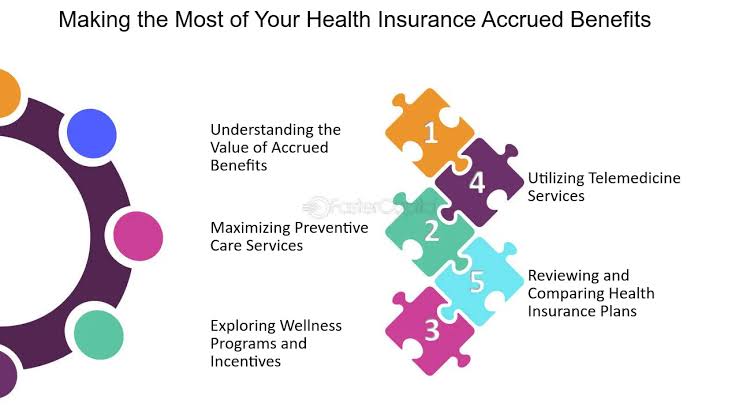Health insurance can be one of the most valuable tools for protecting your physical and financial well-being. However, many individuals do not take full advantage of their insurance plans, either because of confusion about benefits, lack of information, or missed opportunities. In this comprehensive guide, we’ll walk you through how to use your health insurance benefits effectively so you can maximize your coverage, minimize your out-of-pocket costs, and improve your overall health outcomes.

Understanding Your Health Insurance Plan
Before diving into strategies, it’s essential to understand the basic components of your health insurance plan. These include:
1. Premiums
The amount you pay every month to keep your insurance coverage active.
2. Deductible
The amount you must pay for covered health services before your insurance starts to pay.
3. Copayments and Coinsurance
- Copayment: A fixed amount (e.g., $25) you pay for certain services.
- Coinsurance: A percentage (e.g., 20%) of costs you pay after the deductible is met.
4. Out-of-Pocket Maximum
The most you’ll have to pay in a year before your insurance covers 100% of your covered services.
5. In-Network vs. Out-of-Network
Insurance companies negotiate rates with a group of doctors and facilities. Using in-network providers helps you save money, while out-of-network care usually costs significantly more.
Step-by-Step Guide to Using Your Health Insurance Benefits Effectively
Step 1: Read Your Summary of Benefits and Coverage (SBC)
Your insurer provides a Summary of Benefits and Coverage when you enroll. This document explains:
- What services are covered
- How much you will pay for various types of care
- What your deductibles, copays, and coinsurance rates are
Tip: Review this document thoroughly and keep a copy handy.
Step 2: Create a Personal Healthcare Strategy
Evaluate your personal and family health needs to make smart decisions about your insurance.
- Do you need regular prescriptions?
- Do you or your family members see specialists?
- Is anyone managing a chronic condition?
By understanding your needs, you can better choose when and how to use your insurance benefits.
Step 3: Stay In-Network Whenever Possible
Going to in-network providers saves you money. Most insurance companies have online directories to help you find in-network doctors, specialists, and hospitals.
Tip: Always call ahead and confirm with the provider that they are still in-network, as contracts can change.
Step 4: Use Preventive Care Services
Under the Affordable Care Act (ACA), many preventive services are covered at no additional cost to you. These include:
- Annual physical exams
- Screenings for blood pressure, cholesterol, and diabetes
- Vaccinations
- Cancer screenings (e.g., mammograms, colonoscopies)
Preventive care helps catch problems early, potentially avoiding costly treatments later.
Step 5: Take Advantage of Wellness Programs
Many insurers offer wellness benefits, including:
- Gym membership reimbursements
- Smoking cessation programs
- Weight loss coaching
- Mental health support
These programs are designed to keep you healthy and reduce long-term costs.
Step 6: Understand How Referrals Work
Some insurance plans, especially HMOs, require a referral from your primary care provider (PCP) to see a specialist.
- Failing to get a referral can result in the visit not being covered.
- PPO plans typically allow you to see specialists without a referral, but it’s still good to verify.
Step 7: Use Urgent Care, Not the Emergency Room (When Appropriate)
Emergency rooms are expensive and should be reserved for true emergencies (e.g., chest pain, broken bones). For less severe issues like minor infections or sprains, go to an urgent care clinic instead.
Benefit: You could save hundreds of dollars and still receive quality care.
Step 8: Compare Prices for Services and Medications
Healthcare costs vary even within the same city. Use your insurer’s price comparison tools or third-party websites to:
- Compare procedure costs
- Check hospital and provider ratings
- Find cheaper pharmacies
Example: An MRI might cost $1,500 at one facility and $600 at another.
Step 9: Keep Track of Your Medical Expenses
Maintaining a record of your medical expenses helps you:
- Track how close you are to meeting your deductible and out-of-pocket maximum
- Plan the timing of elective procedures
- Ensure accuracy in billing
Consider using spreadsheets or health management apps to stay organized.
Step 10: Maximize the Use of Your Health Savings Account (HSA) or Flexible Spending Account (FSA)
- HSA: Available with high-deductible health plans, HSAs offer tax advantages and funds roll over year to year.
- FSA: Allows you to use pre-tax dollars for qualified expenses but usually has a “use-it-or-lose-it” policy.
Use these accounts to pay for copays, prescriptions, dental work, vision care, and even some over-the-counter items.
Step 11: Review and Appeal Denied Claims
If your insurer denies a claim, don’t automatically accept the decision.
- Review the explanation of benefits (EOB)
- Call your insurer for clarification
- File an appeal with supporting documents from your provider
Many denials are reversed upon appeal, especially if caused by coding errors.
Step 12: Understand Emergency Coverage When Traveling
If you’re traveling within the country or internationally, check your insurance policy to understand:
- Emergency room access
- Hospital network limitations
- Whether travel insurance is advisable
Some insurers offer telehealth or global support hotlines for travelers.
Common Mistakes to Avoid
- Ignoring Your SBC: Leads to surprise bills and misunderstanding of benefits.
- Skipping Preventive Care: Misses opportunities to catch health problems early.
- Using Out-of-Network Providers: Results in higher out-of-pocket costs.
- Not Checking Drug Formularies: Your prescription may not be covered or may cost more than alternatives.
- Forgetting to Use HSA/FSA Funds: Missing out on tax savings.
How to Optimize Your Plan Year to Year
Each year during open enrollment, revisit your insurance choices:
- Compare new plan options
- Update life changes (marriage, children, job changes)
- Review your past year’s usage and projected needs
Switching to a different plan may offer better benefits or cost savings.
Using Technology to Manage Your Health Insurance
Many insurance companies offer apps or online portals that allow you to:
- View claims and benefits
- Download your insurance card
- Estimate procedure costs
- Schedule appointments
- Contact customer service
These tools can enhance your understanding and usage of your plan.
Special Tips for Families and Caregivers
If you’re managing insurance for multiple family members:
- Coordinate all appointments around a central calendar
- Assign someone to manage medical records
- Group services together (e.g., annual exams) to reduce trips and costs
For aging parents or dependents, consider long-term care insurance or supplemental plans.
FAQs About Using Health Insurance Benefits
Q: Can I use my insurance for mental health services?
A: Yes, most plans include mental health and substance use disorder services. Check for in-network therapists and telehealth options.
Q: What if I lose my insurance mid-year?
A: You may qualify for a Special Enrollment Period (SEP) to find new coverage or use COBRA to continue your previous plan.
Q: Are vaccinations covered?
A: Most vaccines are covered at no cost under preventive care, including flu shots and childhood immunizations.
Q: What is a deductible vs. out-of-pocket max?
A: The deductible is the amount you pay before insurance starts paying. The out-of-pocket maximum is the most you pay in a year before insurance covers 100%.
Final Thoughts
Knowing how to use your health insurance benefits effectively is more than just having a card in your wallet. It involves understanding your plan, being proactive with preventive care, making informed decisions, and using available tools and resources.
By taking time to understand your coverage and applying the strategies in this guide, you can reduce healthcare costs, get the care you need, and make the most of your investment in health insurance.
Whether you have an employer-sponsored plan, marketplace coverage, or private insurance, becoming an empowered, informed health consumer will benefit both your well-being and your wallet.
If this article was informative also checkout: Do Renters Really Need Insurance
also checkout: Click Here



